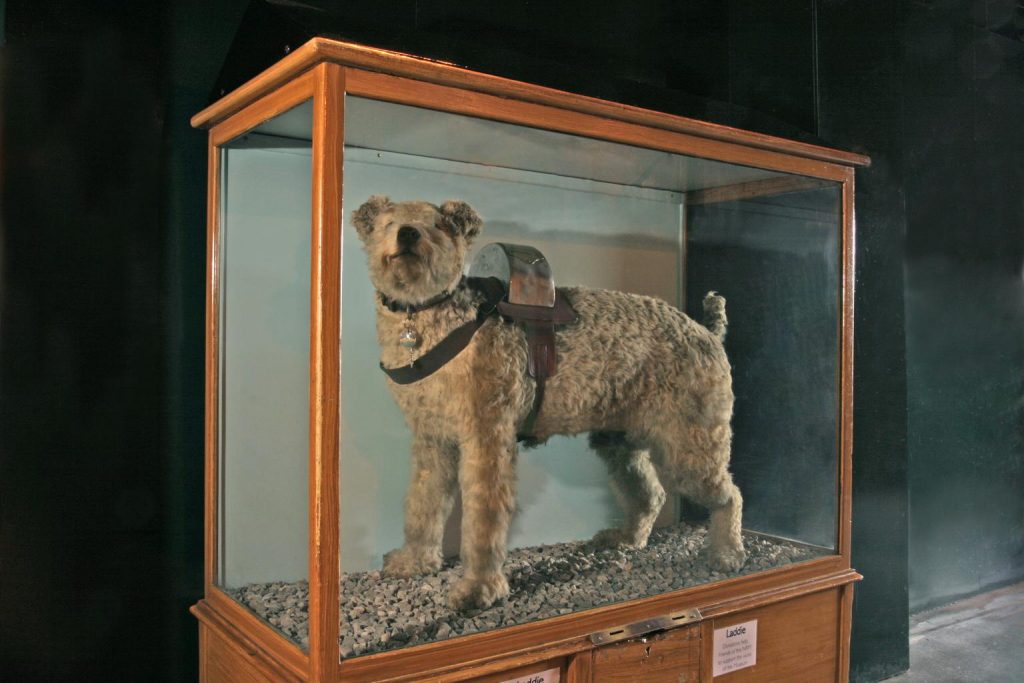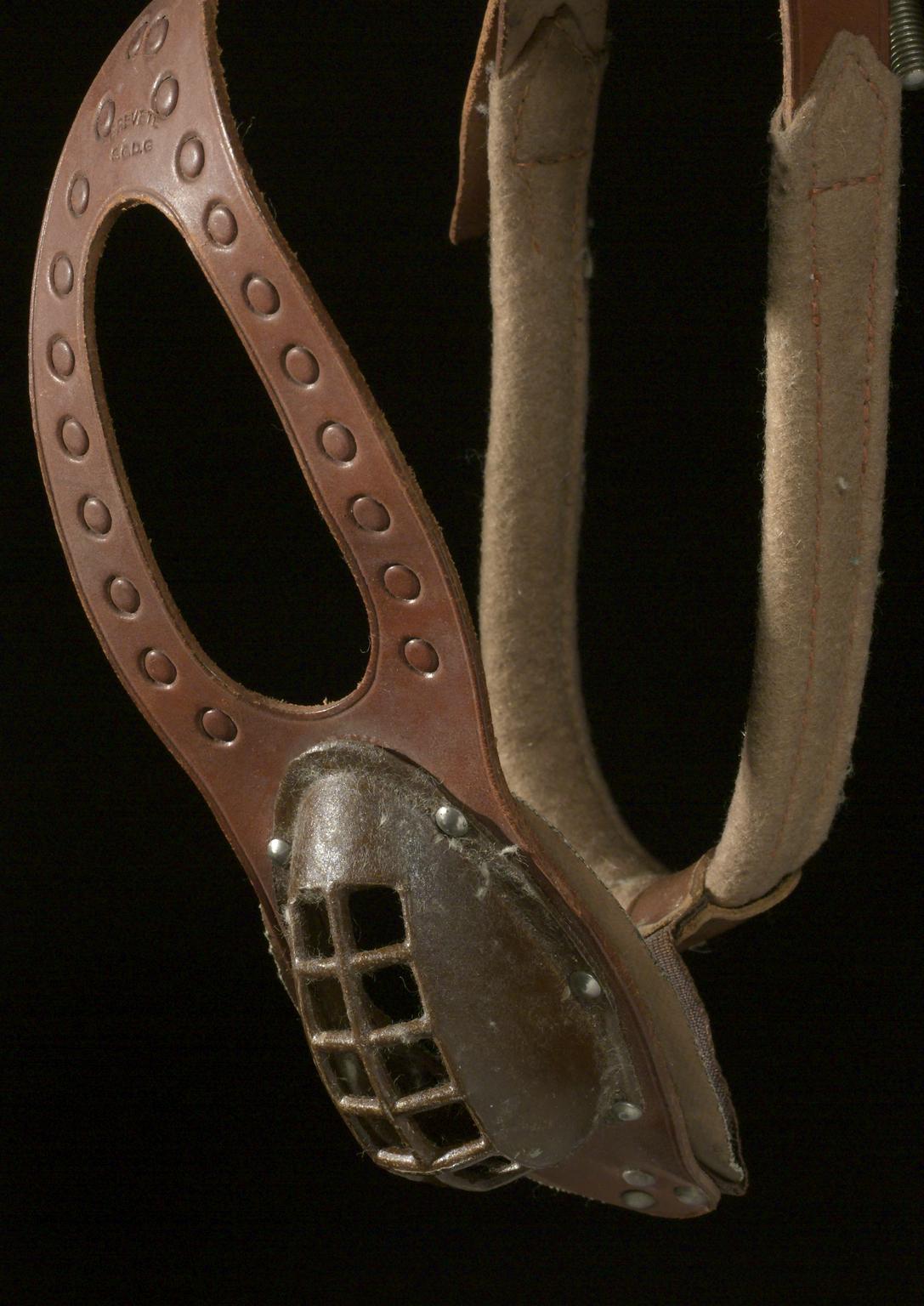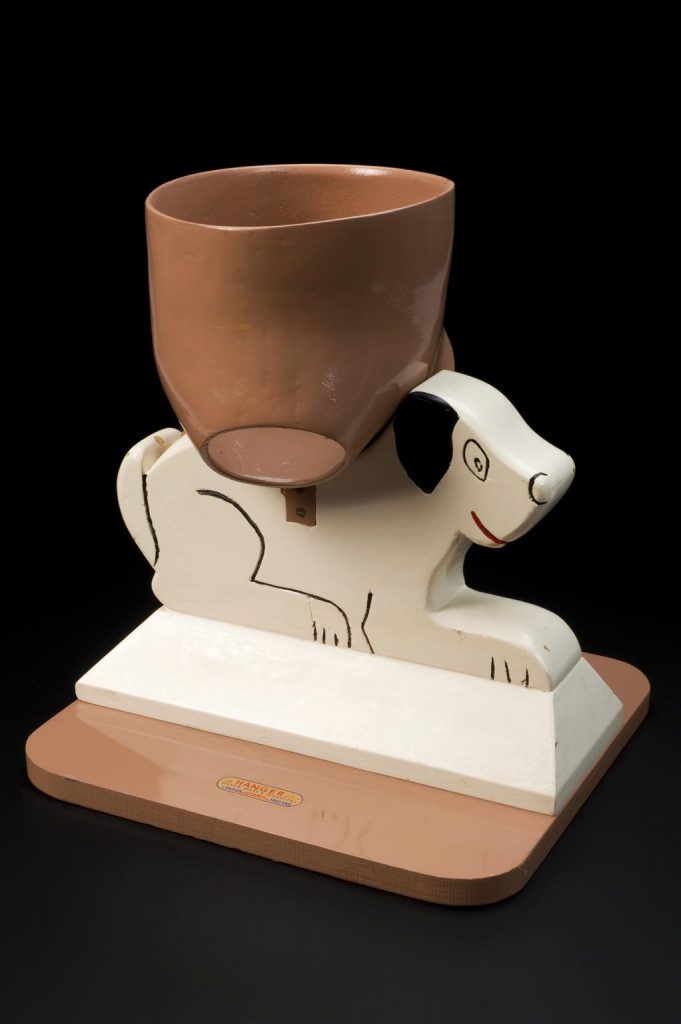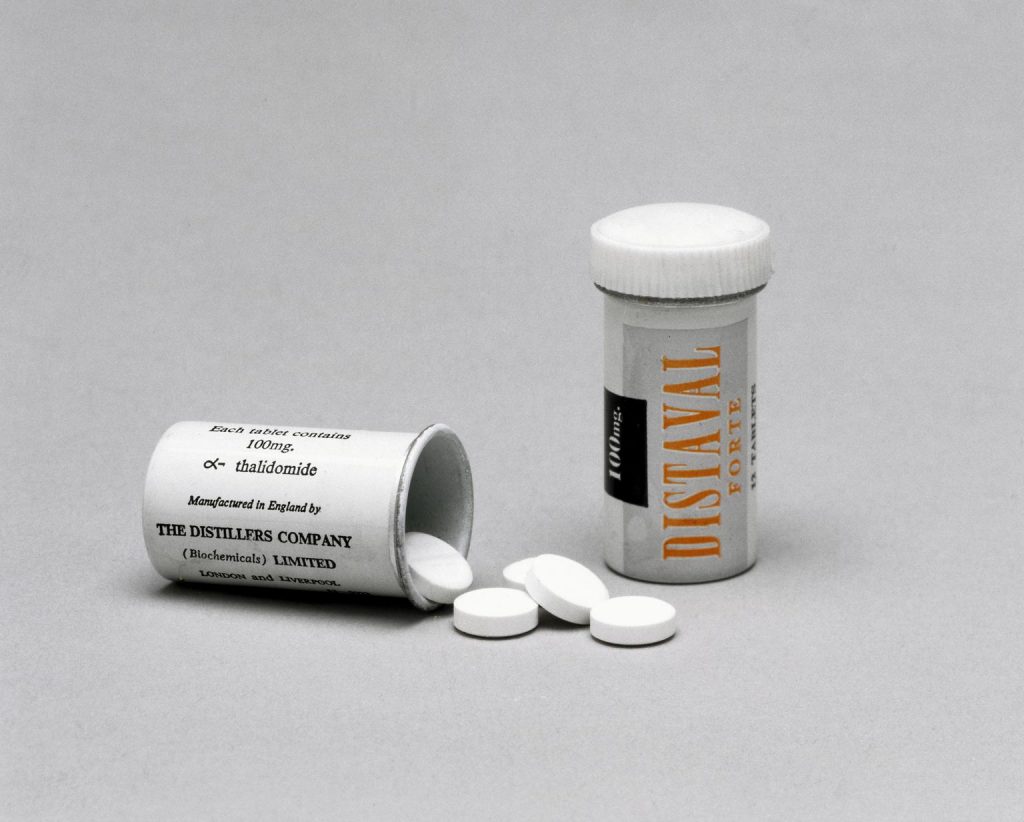
Laddie
Standing proudly in the Station Hall at the National Railway Museum in York, Laddie hails from a more innocent era and a time when it wasn’t considered poor form to stuff an employee once they’d died.
During the first half of the 20th century, Waterloo station in London was home to a succession of railway collection dogs. These faithful pooches padded around the station’s concourse with money boxes strapped to their backs, for commuters to drop charitable donations into.
Laddie was an Airedale terrier, born in 1948. With a box strapped to his back, he collected money for the Southern Railway Servants’ Orphanage, and worked at Waterloo Station for seven years.
Laddie retired in 1956 and went to live at the Southern Railway Home for Old People at Woking.
After Laddie died he was stuffed, mounted and sent to Wimbledon where he continued to raise money until 1990.
Fun fact!
Airedale Terriers are the tallest of all terrier breeds, and are around 56–61cm tall. Airedale Terriers also served during the First World War, and were used to carry messages and mail, and to find wounded soldiers.

Dog chastity belt
Whilst I know a few ‘young bucks’ who could probably do with one of these, this dog chastity belt is a rather unusual contraption, and not something I’ve ever encountered along the aisles of my local pet store.
Made in Paris in 1919, this rather fearsome looking item features a handy waist belt and a big gap at the back so you can still go to the toilet. Funnily enough, this object isn’t on pub(l)ic display, so you’d have to make a special appointment if you wanted to see it.
A quick search online has unearthed a range of modern chastity belts that look equally as strange, but are probably a lot more comfortable for the wearer. There’s an argument to be had for sterilisation as a method of controlling unwanted pups, but that’s for another time…

Edward Jenner’s tobacco box
This tobacco box was owned by Dr Edward Jenner, who pioneered smallpox vaccinations.
Jenner’s experimentation with low level doses of the smallpox virus tested his theory that was drawn from the folklore of the countryside—that milkmaids who suffered the mild disease of cowpox never contracted smallpox.
In 1796, he inserted pus taken from a cowpox pustule into the arm of eight-year-old James Phipps. Jenner subsequently proved that having been inoculated with cowpox, Phipps was immune to smallpox.
He submitted a paper to the Royal Society in 1797 describing his experiment, but was told that his ideas were a bit too ‘out there’, and that further proof was needed. In a move that would most certainly not be approved of in modern society, Jenner experimented on several other children, including his own 11-month-old son. Hmmm.
In 1798, the results were finally published and Jenner coined the word ‘vaccine’ from the Latin vacca, for ‘cow’.
However, success was not instantaneous for Jenner, as critics claimed it was disgusting and ungodly to inoculate someone with material from a diseased animal. Poor old Jenner was widely ridiculed in the press and it took a while for the public to catch on to the wider benefits of vaccination.
Once they did, however, Jenner was lauded by the great and the good, and the tobacco box is thought to have been a gift to Jenner from his Masonic chums (they finally let him join the Freemasons in 1804 once his theories had been proven). The tobacco box features a copper greyhound on the lid, the likely symbolism being of aristocracy and wealth, but also because greyhounds are grey.
This box is currently on display at the Science Museum in London in Journeys through Medicine: Henry Wellcome’s Legacy.
Fun fact!
Greyhounds are the only breed of dog to be named in the Bible:
‘There be three things which go well, yea, Which are comely in going; A lion, which is strongest among beasts and Turneth not away from any; A greyhound; A he-goat also.’
– Proverbs 30:29-31, King James Version

‘Sitting socket’ mounted on a toy dog
Designed in 1966, the sitting socket was an artificial limb designed for children aged 6–12 months who were born with extremely short limbs (phocomelia). It helped get the child used to a sitting position and also got them used to wearing artificial limbs, which would be fitted at a later date.
Although many factors can cause phocomelia, many of those born in the 1960s had a form of phocomelia caused by the drug thalidomide.

Thalidomide was developed as a sleeping pill in the 1950s and was though to be safe for pregnant women to use, especially in the treatment of morning sickness. Animal tests did not look at the effects of the drug during pregnancy and the drug was licensed in 1956. There were over 10,000 thalidomide births before the link was made in 1961, and the drug was finally withdrawn. It is still used today to treat some cancers and side effects of leprosy.
The sitting socket was developed by Hanger Orthopaedic Group, a leading prosthetics manufacturer founded by American Civil War amputee James Hanger in 1861.
Whilst recovering from the loss of his leg and dissatisfied with the fit and function of his prosthesis, Hanger designed a revolutionary limb for himself made from whittle barrel, stave and metal. His design featured hinges at the knee and ankle to create better freedom of movement and his design used rubber bumpers, rather than catgut tendons (I was disappointed to find out cat gut tendons are not what they say they are. Cats are my enemy).
In 1871, US patent 111,741 was given to Hanger and he was subsequently commissioned by the government to develop prosthetic limbs for veteran soldiers.
Fun fact!
To this day, Hanger are world leaders in the provision of prosthetic limbs and recently created a prosthetic tail for a dolphin.